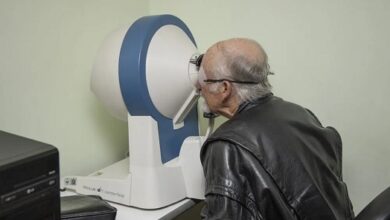What is Fertilization Composition and How is fertilization process
Fertilization
Fertilization is the process by which two sexual gametes, one male and one female, unite, making it possible to create a new life . Explained like this, it may seem like a simple process, but it is quite the opposite. It is a complex procedure that requires a series of optimal conditions to occur, such as, for example, that the woman is in her fertile days and ovulation has occurred.
What does the fertilization process consist of?
The fertilization process It occurs inside the female body. As we have said, for fertilization to occur it is necessary for the woman to be in a specific phase of her menstrual cycle: the ovulation phase. This happens approximately on day 14 of the cycle, when the mature egg leaves the ovary and reaches the fallopian tube. During intercourse, through ejaculation, millions of sperm penetrate the vagina. Attracted by the substances emitted by the ovum, they will ascend through the cervix and uterine cavity until they reach the fallopian tubes, where the ovum is found. Of all those millions of spermatozoa, only about two hundred manage to get here and only one of them will manage to cross the outer membrane of the egg and fuse with it. This can occur between 24 and 72 hours after intercourse.
How is the fertilization process?
From what we have seen so far, it may seem like a simple process, but the truth is that several mechanisms and changes must occur for fertilization to take place. Specifically, the fertilization process has four different stages:
1. Penetration of the corona radiata
In the first step of the fertilization process, the sperm must penetrate the layer of cells that surrounds the egg and is known as the corona radiata.
2. Penetration of the zona pellucida
This is the second barrier of the fertilization process. Here, the head of the spermatozoon makes contact with the ZP3 receptor of the zona peludica of the ovum. This union causes a reaction that releases enzymes, which dissolve this area to allow the passage of the sperm.
3. Fusion of membranes
This is the moment of the fertilization process in which the spermatozoon comes into contact with the plasmatic membrane of the ovum. Here 3 processes take place in the female gamete: formation of the fertilization cone, depolarization of its membrane and release of cortical granules.
4. Fusion of the nucleus and formation of the zygote
It is the last step of the fertilization process and here the spermatozoon advances until its head is next to the female pronucleus and, once they are next to each other, fusion occurs. This means that the membranes of both disappear so that their chromosomes can come together and that the cell has the initial chromosome set (46).
What is the development of the fertilization process?
When it unites with the ovum, the spermatozoon loses its tail and fuses with the nucleus of the female gamete. For its part, the egg membrane will modify its chemical structure to prevent access by other sperm. This fusion of an egg and a sperm will give rise to a new cell, with genetic content from both parents, which is called a zygote. The zygote will begin a journey towards the uterus. For three or four days it will advance pushed by the muscular impulses of the tube until it reaches the uterine cavity. Cell division has already started and the small embryo will adhere to the endometrium where it will develop and grow until the moment of birth.
What happens when fertilization naturally fails?
As we have seen, fertilization occurs naturally is not always easy. Sometimes getting pregnant can be delayed or complicated by many factors. To the natural fertilization that we have explained throughout this post, we must add the work of assisted reproduction . This is the set of medical techniques and treatments designed to achieve a pregnancy when there are fertility problems.
There are different assisted fertilization treatments such as artificial insemination (AI), in vitro fertilization (IVF), egg donation , embryo transfer or embryoreception . At FIV Valencia we are experts in assisted fertilization and we have the best specialists in this field with a clear objective: to help couples with fertility problems fulfill their dream of starting a family.
If you have been trying to get pregnant for between six months and a year and have not been successful, it is advisable to see a specialist. Contact us! We will be happy to help and advise you throughout the process.


